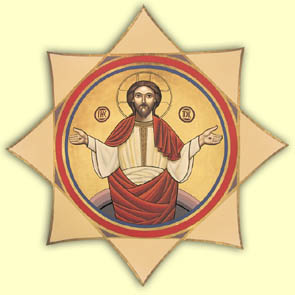
St. Anthony Coptic Orthodox Church
| And calling to Him a child, He put him in the midst of them, and said, "Truly, I say to you, unless you turn and become like children, you will never enter the kingdom of heaven. (Matthew 18:2-3) |
|
Youth Corner Click here for past issues of the Youth Corner A Message For You -- Our Church We have been talking about our church: about how special and holy it is and how it leads us into being a new creation, into the way of life in Jesus Christ. But what do we know about our Coptic Orthodox Church? What do we know about its formation, about its history, about its place in the world and in Christianity? There is a very good article on our St. Anthony’s church web site entitled, “History of the Coptic Orthodox Church” by Father Marcos A. Marcos. This is a long article, but let’s see if we can take a little bit from it to better understand our Church:
Christianity spread very quickly in Egypt and, so with it, did persecutions. Persecution means to punish or hurt someone because of what they believe. The Romans first persecuted the Copts according to the edict (order) of 202 AD, which said that Christian conversion must be stopped at all costs. The edict required citizens of the Roman Empire to carry a certificate showing that they had offered sacrifice to the Roman gods. Those who refused – among them Coptic men, women, and children – were tortured and killed. Some of the worst of these persecutions against the Copts came during the reign of the Roman emperor, Diocletian. So severe were the mass tortures and killings of the Coptic people under Emperor Diocletian that the Copts took the day of Diocletian’s election as emperor – in 284 AD – as the beginning of the Coptic Church calendar. Thus, 284 AD is known as Anno Martyrum (AM), the Year of the Martyrs. But it was during these tortures and trials by the Romans that, through the second century, our Coptic Church grew and became fully established. By the third century the hierarchy (the priestly ranks) of the Coptic Church was formed: from our holy Patriarch in Alexandria (currently His Holiness Pope Tawadros II, the 118 Patriarch of the See of Alexandria) down to the humble priests and monks who serve our Church. The Coptic Church so is marked and identified with persecution and martyrdom (by the Romans, Byzantines, and many others) in the name of Christ Jesus. All through history the Coptic Church has been important in forming and shaping Christian understanding and teaching. The Catechetical School in Alexandria was the earliest, important institution for theological education regarding Christianity. The deans and teachers of this school along with its graduates formed and organized Christian theology and doctrine. This Coptic institution defined Christianity for all ages to come. Clement of Alexandria, Origen, Dionysius (the Great) of Alexandria, and many others came from this school. At the Council of Nicea (in 325 AD) St. Athanasius was chosen by Anba Alexandros (the 19th Pope of the See of Alexandria) to speak against the heresy of Arius and his followers. St Athanasius very well and successfully defended, and so helped define the Orthodox faith against the false beliefs of the Arians. For this St. Athanasius was commended by the council and by Emperor Constantine. St. Athanasius also formulated the text of the Orthodox Creed, which was accepted by this council. Two other ecumenical councils followed (the Council of Constantinople and the Council of Ephesus) which defined the true Christian faith against various heresies. In all of these the Coptic Church played leading and important roles. And, as most of us know, the Coptic Church gave birth to monasticism. Monasticism is characterized by the urge, in love, to be with God all the time: to pray without ceasing, to hunger for meditation on the word of God, and to discipline one’s self by fasting, vigils, obedience, celibacy, subduing the flesh, willfully taking on poverty, and giving up worldly concerns. St. Antony the Great (251-356 AD) is considered the father of all monks. Though he was not the first to go to the deserts of Egypt, St. Antony was the first to take up true monasticism in his struggle for the Lord. Christianity is a missionary religion and the Copts have long been very active as missionaries and in defending the Orthodox faith. St. Athanasius was exiled (sent far away as a prisoner) five times for his keeping of the true faith in strong opposition to the Arian heresies. While in exile he helped to establish Orthodox Christianity and monasticism in Western Europe. The soldiers of the Theban Legion (a detachment of Coptic Christians in the Roman army) were all martyred because they refused to worship the idols of Emperor Maximian. Copts have spread the word of the Lord and the Orthodox faith in Britain, Ireland, Africa, Arabia, Persia, throughout Europe, and now in North America, South America, Australia, and many other places. Likewise, many clergy and other people from other countries and faiths have come to the fathers of our Church and have learned from and been influenced by our Coptic Orthodox faith. Our Coptic Church has endured many trials and persecutions including those resulting from the terrible schism (division or breakup) of the Christian Apostolic Church around the Council of Chalcedon in 451 AD and the Arab conquest of Egypt in 642 AD (If you like, you can read more about these on our web site). Today the Copts number about six million and the liturgy is still celebrated in its ancient, original form. The Church in the past century has been undergoing a significant revival in education and inter-working with other churches. This includes youth ministries and new theological seminaries among other works. We mentioned above Coptic missionary work to many countries. Included also are the establishment of churches Kuwait, Libya, Lebanon, and the Caribbean Islands. New churches have been built, new monasteries and convents have been established, and the number of monks and nuns has been increasing in the past fifty years. And our Church meets regularly with other churches, both Catholic and Protestant. Dialogues between the Coptic Church and other Churches have been initiated and carried out by our Patriarch himself in brotherly love towards the achievement of the oneness of faith. I hope from this you can see the great importance that our Coptic Church has had throughout history, within Christianity, and in the whole world. Ours is an enduring, vital, and very spiritual Church. We are all part of the Lord’s great movement within our Church and we need every minute to remember and respect this as we worship in His name.A Quiz To Do --
Please note: The text for this quiz is taken from the Revised Standard Version of the Bible. Your Bible may be a different version and so the wording may be a little different from what is used here. Mom and Dad, please feel free to help the younger kids: 2. In verse 32, how did the believers treat their possessions? 3. In verse 33, in what way did the apostles give testimony to the resurrection of the Lord Jesus? 4. In verses 34 through 35, how were the needy among the believers cared for? 5. In verses 36 through 37, what was the name of the native of Cyprus who sold a field which belonged to him? 6. In verse 12, what was done among the people by the hands of the apostles? 7. In verse 12, where were the believers all together? 8. In verse 13, how did the other people feel about the believers? 9. In verse 15, whom did the people carry into the streets? 10. In verse 15, what part of St. Peter at least did the people want to fall on the sick? 11. In verse 16, from where did the people gather bringing the sick and those afflicted with unclean spirits? 12. In verse 16, what happened to the sick and those afflicted with unclean spirits?
Coptic Kid Corner (Stories, quizzes, word search, puzzles, games, Coptic language lessons, Sunday school lessons, and more) |
Home + Announcements + Church Occasions and Special Services + Good Tidings + Youth Corner
Photo Gallery + St. Anthony the Great + The Coptic Church + Favorite Links + Contact Us
St. Anthony Coptic Orthodox Church
118-120 W Main Street, Annville, Pennsylvania
Last Modified: November 27, 2017
 Since we are talking about our Coptic Orthodox Church, why don't we do a quiz that shows us a little of what the early Christian Church was like at the time of the apostles right after Jesus' ascension into heaven. To do this let's look in the Bible at the book of Acts, Chapter 4, verses 32 through 37 and Chapter 5, verses 12 through 16.
Since we are talking about our Coptic Orthodox Church, why don't we do a quiz that shows us a little of what the early Christian Church was like at the time of the apostles right after Jesus' ascension into heaven. To do this let's look in the Bible at the book of Acts, Chapter 4, verses 32 through 37 and Chapter 5, verses 12 through 16.